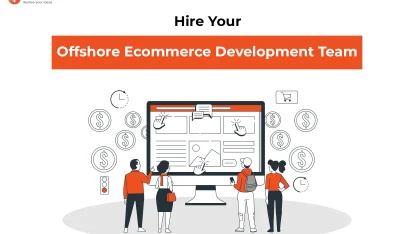- Home
- >
- Ecommerce Development
- >
- Update Adopting the Iterative Prototyping Methodology for Mobile App Development
Adopting the Iterative Prototyping Methodology for Mobile App Development is an article sent to you by the InApps editorial team. Hope readers will have more useful knowledge at www.inapps.net
You are viewing the article: Adopting the Iterative Prototyping Methodology for Mobile App Development
The Iterative Prototyping Methodology for Mobile App Development is being largely adopted by developers worldwide because it enables them to curb expenses, set a definite release date and stick to the original product development goals.
As per a Yahoo Flurry report, 90% of mobile time is spent on using applications and to match the speed of adoption, it is essential to reduce the time-to-market without compromising on the essential features.
However, unlike website development, the product lifecycle of a mobile application is shorter with varieties in devices, screen sizes, and platforms, both in design and user testing stage.
Iterative Prototyping Methodology
Iterative prototyping is an agile approach for meeting the rapid version change. The iterative prototyping methodology enables developers to build, test, iterate, re-test and rebuild an app faster and at a smaller cost.
The steps followed in this methodology include –Defining the USP of the application – this is essential to differentiate the product from it’s existing and prospective competitors in the market.
– Putting the plan on paper enumerating the fundamental design elements, key functionalities, customer interactions and navigation flow
– Check existing applications in the same category and identify the problem areas in their app to fix them in your app
– A little research amongst end users for requirement mapping to help the team focus on developing customer-centric product
– Using prototyping tools, define navigation flows and resulting end-user actions. These can later be converted into functional flow
– At this stage, you can identify any requirement that hasn’t been covered and updates the same. This is the first testing phase as you can customize any new changes or requirements within the prototyping tool
– Once the changes are made, shift the static mock-up to a high-fidelity prototype and add realistic animations and transitions to show potential interactions and test hypothetical scenarios
– User-test the prototype on different mobile devices to identify bugs and redundant elements. In this phase, basic UI elements can also be changed without affecting the client budget
– Check the final requirements of the iterative prototype before moving on to code
– Developers can now start coding and start laying the foundation for agile development sprints
– Prototype screens and interactions can now be transferred to high fidelity skins based on client and user feedback.
– Backend and frontend SDK tools can be used to create final app and Data storage and integration, server-side logic and versioning also happens at this stage
– Finally, a retesting of the fully-coded mobile app on all devices and with different users
At Solution Analysts we use the iterative project management methodology because it enables us to deliver solutions with shortest-time-to-market, which has a direct impact on the ROI of the mobile application. The methodology also enables us to stay connected with latest market trends and take rapid decisions in development phase.
Follow this to make sure you’ve got Adopting the Iterative Prototyping Methodology for Mobile App Development. Save and share with those around you these extras.
To learn more about ECOMMERCE DEVELOPMENT
Contact us:
www.inapps.net
Let’s create the next big thing together!
Coming together is a beginning. Keeping together is progress. Working together is success.










